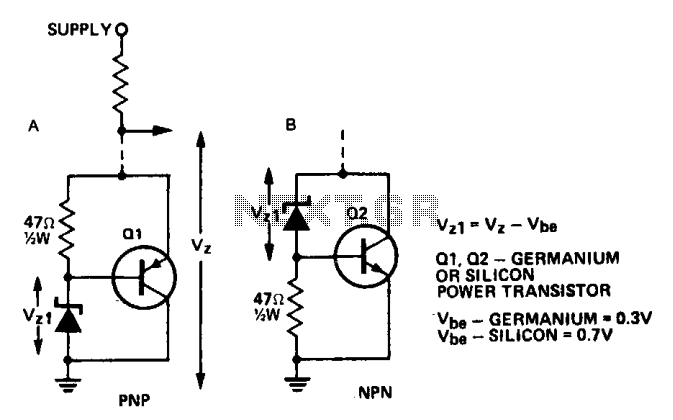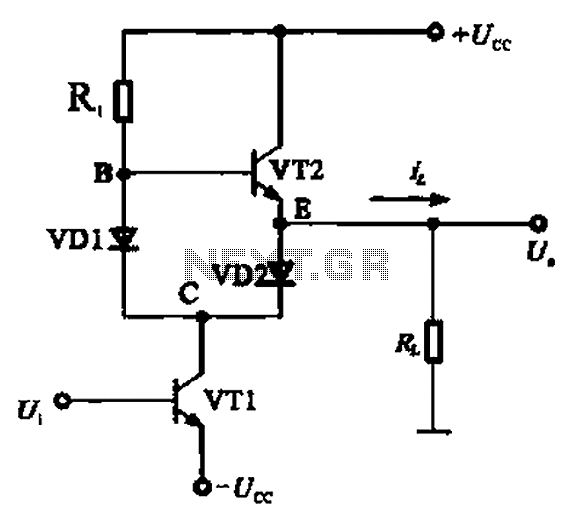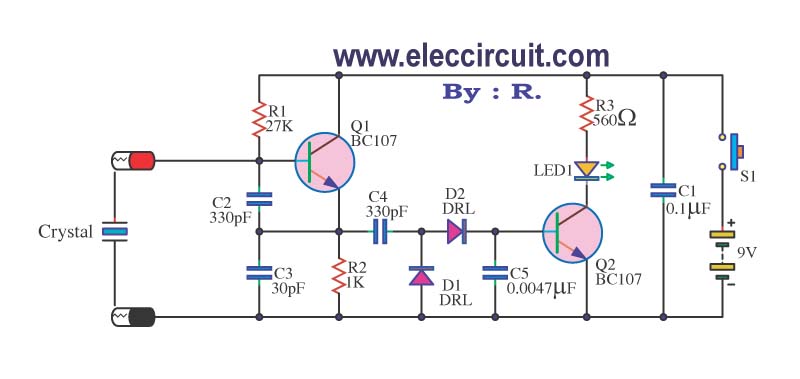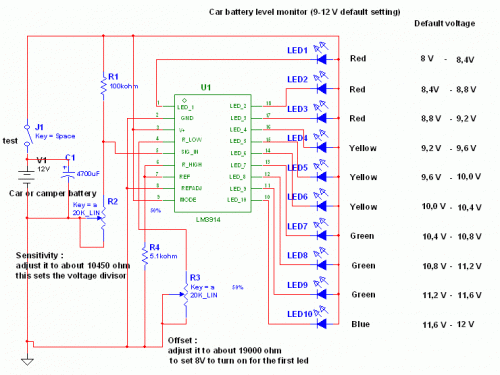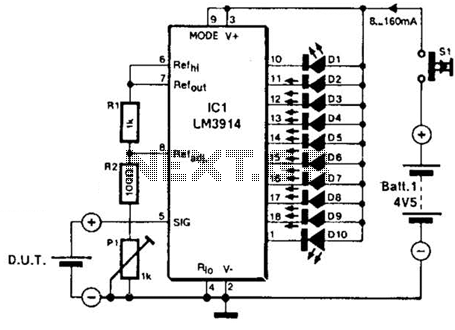
Diode tester
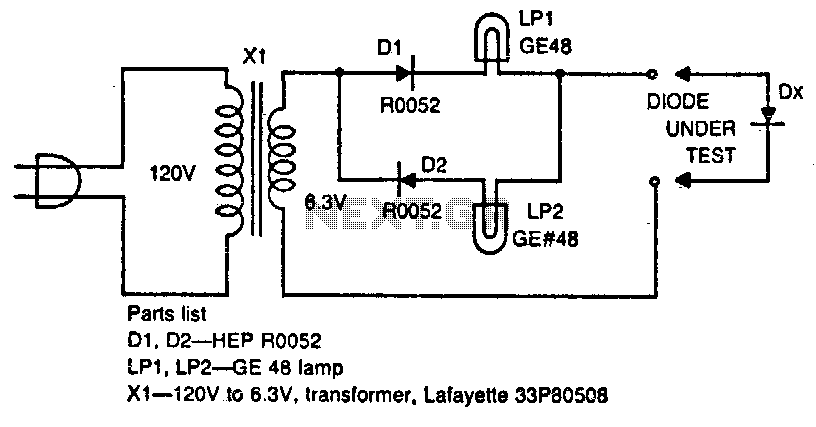
The circuit tests whether a diode is open, shorted, or functioning correctly. If lamp A lights, the diode under test is functional. When lamp B is lit, the diode is good but connected backwards. When both lamps are lit, the diode is shorted, and it is open if neither lamp is lit.
This circuit functions as a diode tester by utilizing two indicator lamps, referred to as lamp A and lamp B. The primary objective is to determine the operational status of a diode under test.
In normal operation, when the diode is functioning correctly and is connected in the correct orientation, lamp A will illuminate, indicating that the diode allows current to pass through it. This condition confirms that the diode is operational and correctly oriented.
If the diode is connected in reverse polarity, lamp B will light up. This indicates that the diode is indeed functional but is not oriented correctly for the intended current flow.
In the scenario where both lamp A and lamp B are illuminated simultaneously, this indicates a short circuit condition within the diode. A shorted diode presents a low-resistance path, allowing current to flow freely in both directions, which causes both lamps to light up.
Conversely, if neither lamp A nor lamp B is lit, this signifies that the diode is open. An open diode does not allow any current to pass through, which is why neither lamp is activated in this state.
The circuit design typically incorporates resistors to limit current to the lamps, ensuring they are not damaged during testing. Additionally, a power source is required to provide the necessary voltage for the test. The arrangement of the components is crucial for accurate testing, and the circuit must be designed to handle the expected voltage and current ratings associated with the diodes being tested.
Overall, this diode testing circuit serves as a valuable tool for electronics engineers and hobbyists to quickly assess the condition of diodes in various electronic applications.The circuit tests whether or not a diode is open, shorted, or functioning correctly. If lamp A lights, the diode under test is functional. When lamp B is lit, the diode is good but connected backwards When both lamps are lit, the diode is shorted, and it is open if neither lamp is lit.
This circuit functions as a diode tester by utilizing two indicator lamps, referred to as lamp A and lamp B. The primary objective is to determine the operational status of a diode under test.
In normal operation, when the diode is functioning correctly and is connected in the correct orientation, lamp A will illuminate, indicating that the diode allows current to pass through it. This condition confirms that the diode is operational and correctly oriented.
If the diode is connected in reverse polarity, lamp B will light up. This indicates that the diode is indeed functional but is not oriented correctly for the intended current flow.
In the scenario where both lamp A and lamp B are illuminated simultaneously, this indicates a short circuit condition within the diode. A shorted diode presents a low-resistance path, allowing current to flow freely in both directions, which causes both lamps to light up.
Conversely, if neither lamp A nor lamp B is lit, this signifies that the diode is open. An open diode does not allow any current to pass through, which is why neither lamp is activated in this state.
The circuit design typically incorporates resistors to limit current to the lamps, ensuring they are not damaged during testing. Additionally, a power source is required to provide the necessary voltage for the test. The arrangement of the components is crucial for accurate testing, and the circuit must be designed to handle the expected voltage and current ratings associated with the diodes being tested.
Overall, this diode testing circuit serves as a valuable tool for electronics engineers and hobbyists to quickly assess the condition of diodes in various electronic applications.The circuit tests whether or not a diode is open, shorted, or functioning correctly. If lamp A lights, the diode under test is functional. When lamp B is lit, the diode is good but connected backwards When both lamps are lit, the diode is shorted, and it is open if neither lamp is lit.
